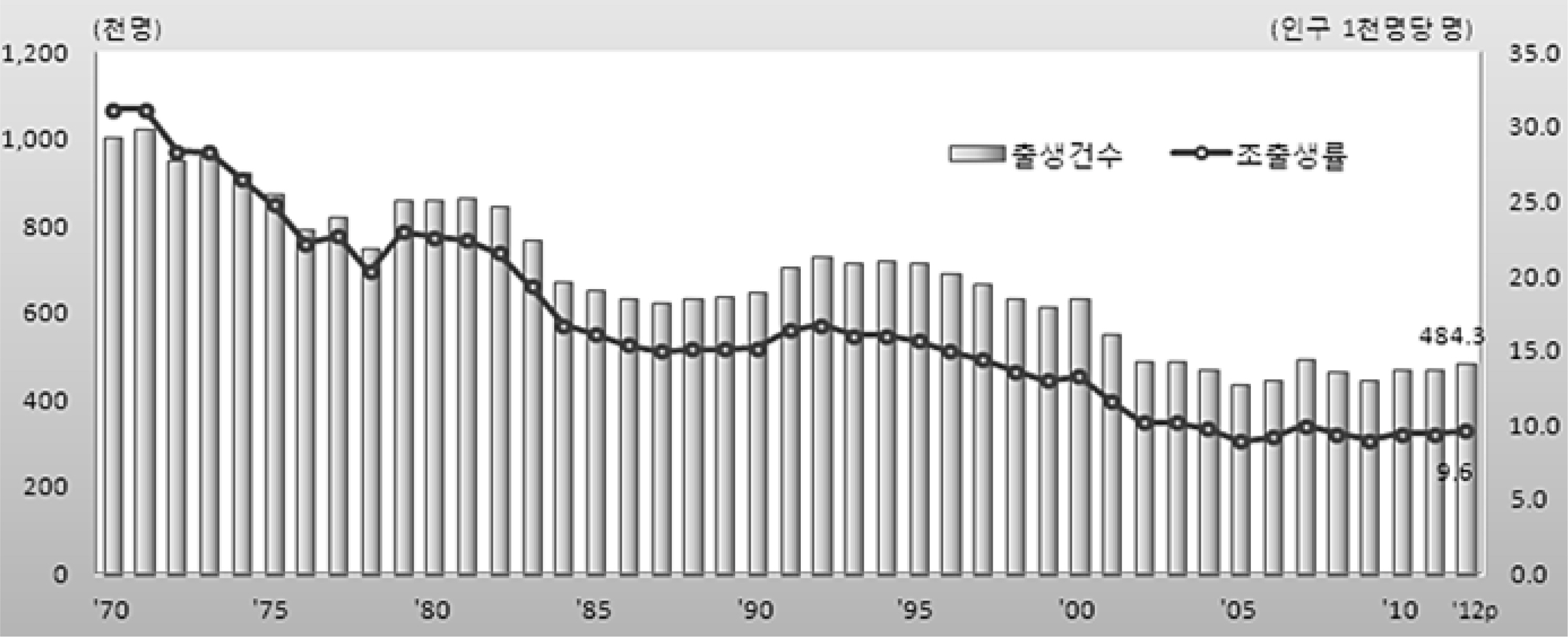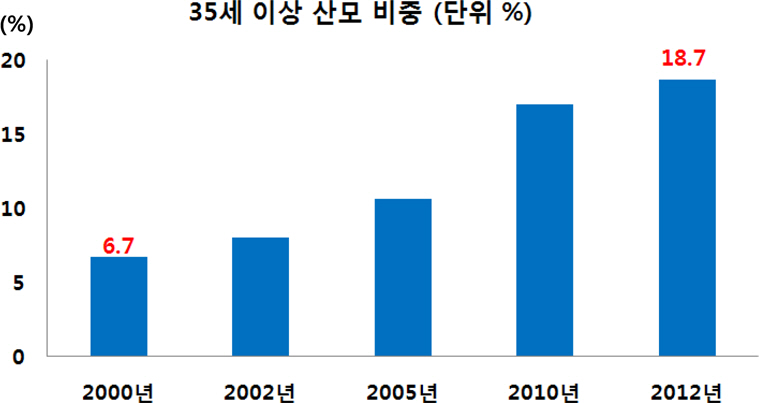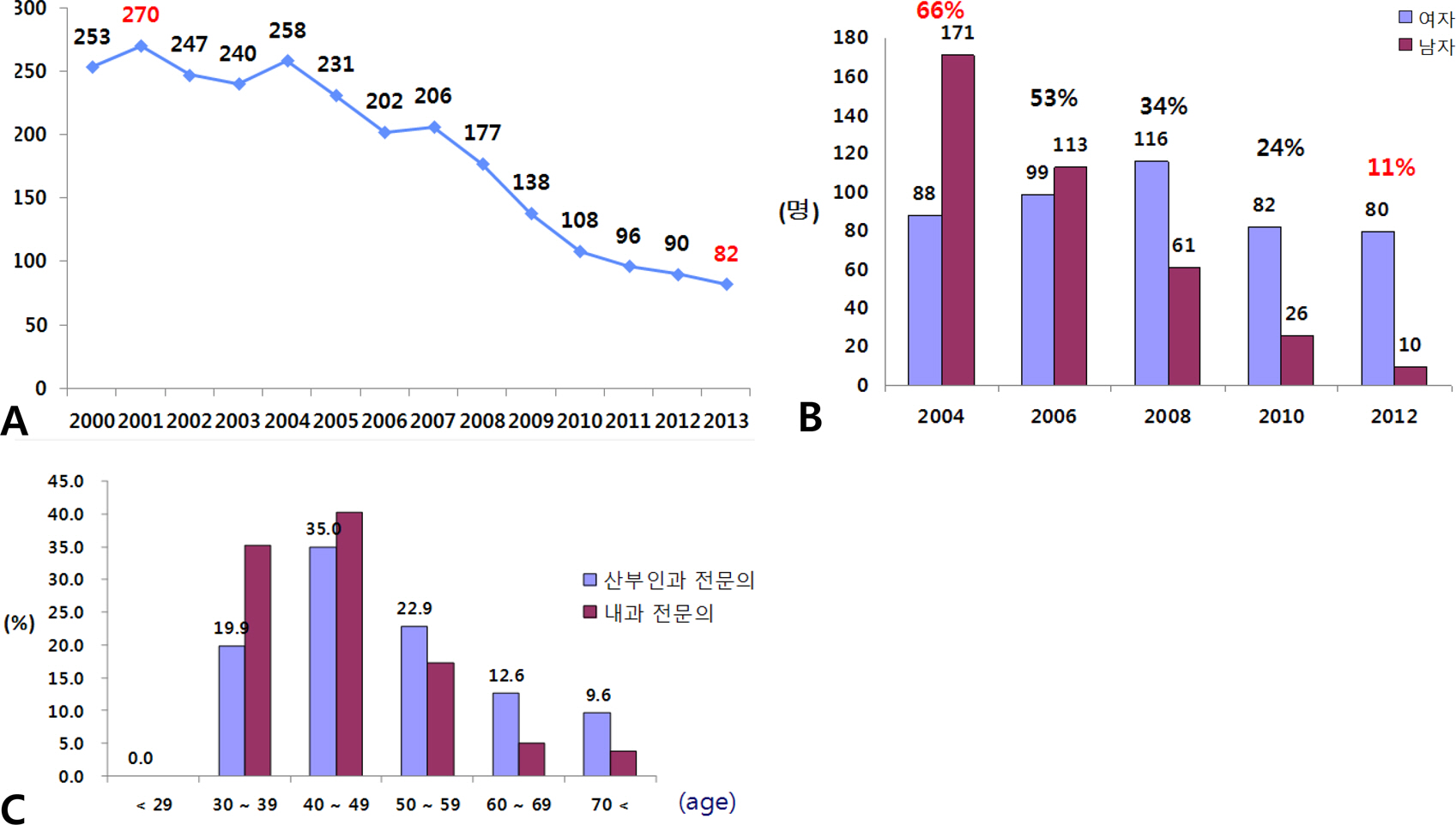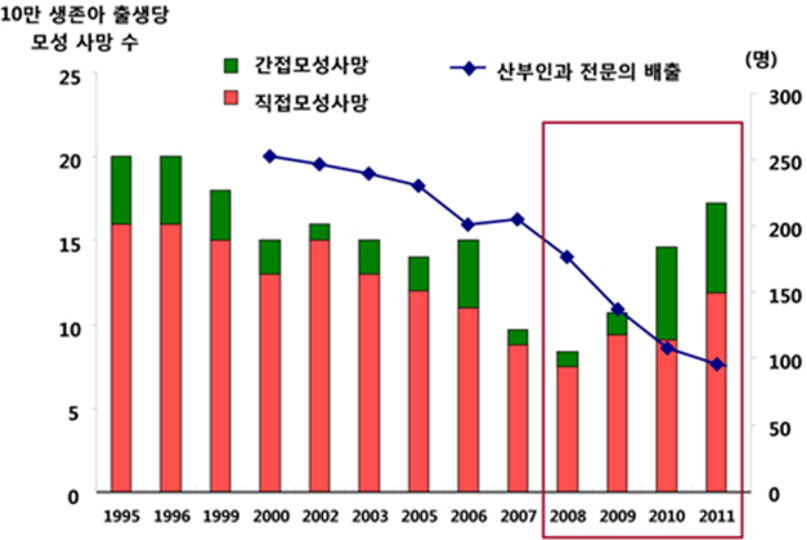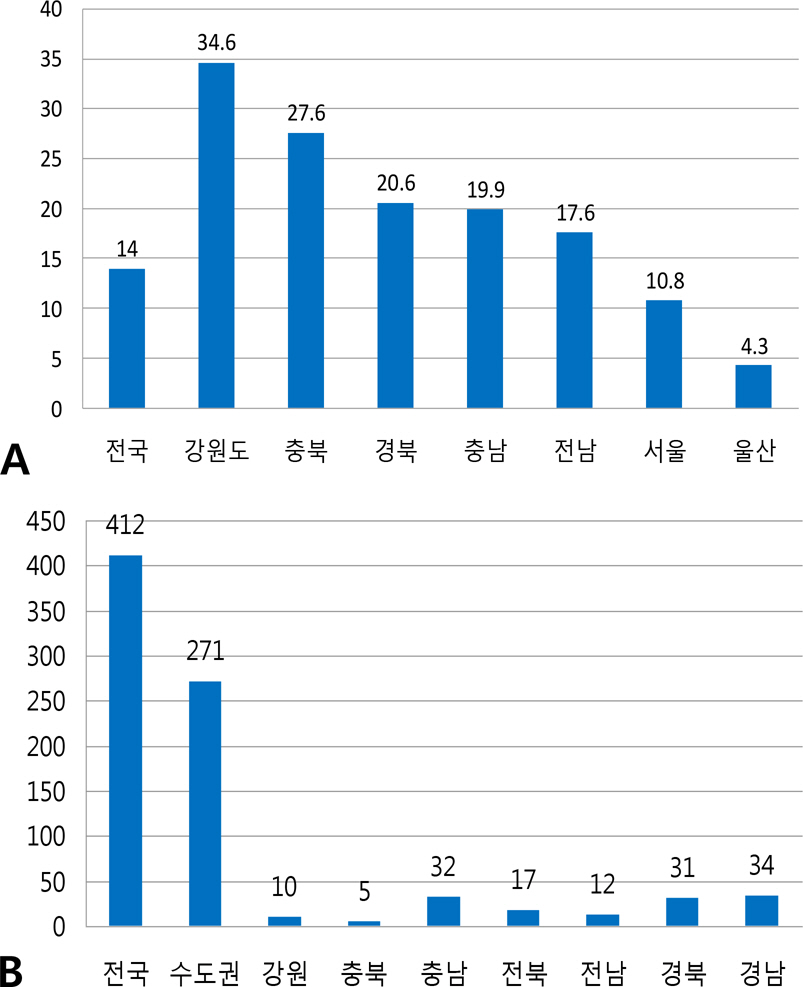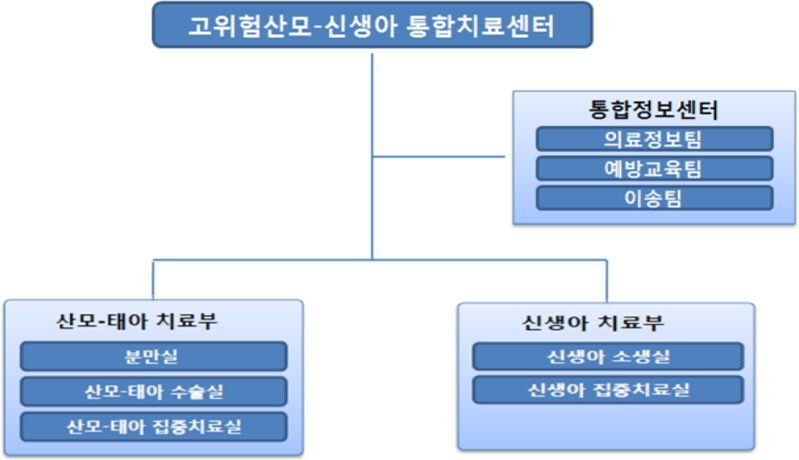Integrated Care Center for High Risk Pregnancy and Neonate: An Analysis of Process and Problems in Obstetrics
- Affiliations
-
- 1Department of Obstetrics and Gynecology, College of Medicine, Hallym University, Seoul, Korea. obgyn25@hallym.or.kr
- KMID: 2280987
- DOI: http://doi.org/10.14734/kjp.2014.25.3.140
Abstract
- The medical environment of obstetric field has been deteriorated seriously, which is caused by sharply declined birth rates and several other causes in Korea. Inversely, the prevalence of high risk pregnancy is continuously going to explode, and human resources and facilities in delivery unit are still in shortage. It is greatly needed to be reinforced, but rather diminished substantively. Finally, maternal death rate of Korea has been extremely increased. It is time that the policies for treatment of high risk maternity in national level, no more leave the situation unchanged. The integrated care system which treats high risk maternity and neonate sequentially is very important in their disease characteristics. It is sure that the integrated management of high risk pregnancy and neonate can make an important role in the improvement of perinatal and maternal death rate and maternal-neonatal health care. Therefore, Ministry of Health and Welfare made a policy that establishes 'Integrated Care Center for High Risk Pregnancy and Neonate' for high risk maternity and neonate. It is supposed to start from four centers as a demonstration project in 2014, and will finally establish 17 centers in 11 broad territories of the country in 2017. It will accomplish a task of emergency center, and carry out treatment and emergency operation at all times. In addition, it will take the roll of emergency transfer system, data collection and analysis, and preventive management service through public education and relations. In the future, Integrated Care Center will play an important role in improving maternal health care as well as obstetric infrastructure.
Keyword
MeSH Terms
Figure
Cited by 8 articles
-
Work Experiences of Delivery Room Nurses: A Phenomenological Study
Yunjung Lee
Korean J Women Health Nurs. 2017;23(2):78-88. doi: 10.4069/kjwhn.2017.23.2.78.Development and Evaluation of Empowering Education Program for Maternal Fetal Intensive Care Unit (MFICU) Nurses
Jeung-Im Kim, Mikyung Park, Gisoo Shin, Insook Cho, So Young Choi, Eun-Mi Jun, Yunmi Kim, Sukhee Ahn
Korean J Women Health Nurs. 2019;25(3):345-358. doi: 10.4069/kjwhn.2019.25.3.345.Indications and characteristics of obstetric patients admitted to the intensive care unit: a 22-year review in a tertiary care center
Hye Yeon Yi, Soo Young Jeong, Soo Hyun Kim, Yoomin Kim, Suk-Joo Choi, Soo-young Oh, Cheong-Rae Roh, Jong-Hwa Kim
Obstet Gynecol Sci. 2018;61(2):209-219. doi: 10.5468/ogs.2018.61.2.209.Maternity care system for high risk pregnant women in obstetrically underserved area
Tae Gyu Ahn, Jong Yun Hwang
J Korean Med Assoc. 2016;59(6):436-442. doi: 10.5124/jkma.2016.59.6.436.Program for obstetric care supporting underserved areas in Korea: outcome and evaluation standards
Jin Young Bae, Seong Yeon Hong
J Korean Med Assoc. 2016;59(6):424-428. doi: 10.5124/jkma.2016.59.6.424.Does family support mediate the effect of anxiety and depression on maternal-fetal attachment in high-risk pregnant women admitted to the maternal-fetal intensive care unit?
Se-Hee Yoon, Mi-Hae Sung
Korean J Women Health Nurs. 2021;27(2):104-112. doi: 10.4069/kjwhn.2021.05.14.Clinical characteristics of lower respiratory tract infection in low birth weight children
Yoonsun Yoon, Geehae Jung, Soohyun Ri, Ji Tae Choung, Young Yoo
Allergy Asthma Respir Dis. 2018;6(4):211-218. doi: 10.4168/aard.2018.6.4.211.A Survey on the Educational Needs and Competence of Nurses in Maternal Fetal Intensive Care Unit
Jeung-Im Kim, Geum Hee Jeong, Hee Sun Kang, So-Hyun Moon, Miok Kim
Korean J Women Health Nurs. 2019;25(2):194-206. doi: 10.4069/kjwhn.2019.25.2.194.
Reference
-
1.National Statistics Korea. National health medical survey. Cause of death statistics, maternal death rate. 2012.2.OECD Family database. 2012.3.Choi EH. Integrated care center for high risk pregnancy and neonate, direction of policy. Public hearing by Korean Society of Perinatology and Ministry of Health and Welfare. Konkuk University Hospital. 2013.4.Kim YH. Integrated care center for high risk pregnancy and neonate, establishment. Public hearing by Korean Society of Perinatology and Ministry of Health and Welfare. Konkuk University Hospital. 2013.5.Ministry of Health and Welfare. Answer for advisory opinion about Integrated care center for high risk pregnancy and neonate. Ministry of Health and Welfare. 2013.6.Ministry of Health and Welfare. 2014 Support project guidance about Integrated care center for high risk pregnancy and neonate. Ministry of Health and Welfare. 2014.7.National Statistics Korea. National health medical survey. Census statics survey, total birth rate.2008–2012.8.Korean Society of Maternal Fetal Medicine. The survey on the actual conditions of delivery room and delivery of high-risk pregnancy, definition and classification of high pregnancy. Korean Society of Maternal Fetal Medicine and Ministry of Health and Welfare. 2012.9.Health Insurance Review and Assessment Service. National health medical survey. Rate of high risk pregnancy. 2012.10.National Statistics Korea. Census statics survey, Current state according maternal aging. 2012.11.Health Insurance Review and Assessment Service. National health medical survey. Medical fee for system. 2012.12.Oh SY. Assessment of emergency charge and night delivery fee in delivery unit. 2nd maternal and child health promotion subject. Public hearing by Ministry of Health and Welfare. 2013.13.Moon CS. Installation of internet based high risk maternal and neonatal delivery system. 2nd maternal and child health promotion subject. Public hearing by Ministry of Health and Welfare. 2013.14.Korean Society of Obstetrics and Gynecology. National health medical survey. Current state of the residentship and specialist of Obstetrics and Gynecology. 2013.15.Korean Medical Association. National health medical survey. Current state of medical specialists according medical department. 2013.16.Korean Hospital Association. National health medical survey. Current state of residentship supply and demand on medical departments. 2013.17.Ministry of Health and Welfare. National health medical survey. Current state of medical vulnerable area. 2012.18.Lee YJ., Kim SH., Seol HJ., Chung SH., Choi YS., Lee KS, et al. Changes in statics of maternal death in Korea (1995-2010). Korean J Perinatol. 2012. 23:179–87.19.Sullivan SA., Hill EG., Newman RB., Menard MK. Maternal-fetal medicine specialist density is inversely associated with maternal mortality ratio. Am J Obstet Gynecol. 2005. 193:1083–8.20.Ministry of Health and Welfare. National health medical survey. Maternal death rate by regional group. 2012.21.Korean Society of Maternal Fetal Medicine. The survey on the actual conditions of delivery room and delivery of high-risk pregnancy, Medical current status –medical delivery system and medical vulnerable area. Korean Society of Maternal Fetal Medicine and Ministry of Health and Welfare. 2012.
- Full Text Links
- Actions
-
Cited
- CITED
-
- Close
- Share
- Similar articles
-
- Need for an Intensive Care Unit for High Risk Pregnancy and a Neonatal Center
- Clinical Characteristics and Outcomes of Mothers and Newborn Babies at an Inte grated Perinatal Center for High-risk Preg nancy and Neonatal Care
- Perinatal Care Center System for High Risk Pregnancy and Newborn in Japan
- Reclassification of High-Risk Pregnancy for Maternal-Fetal Healthcare Providers
- Bench-marking of Japanese Perinatal Center System for Improving Maternal and Neonatal Outcome in Korea

